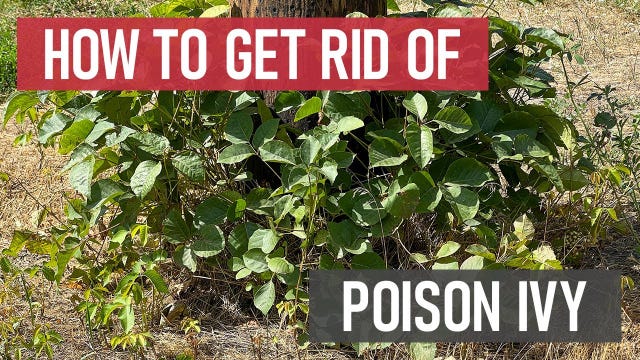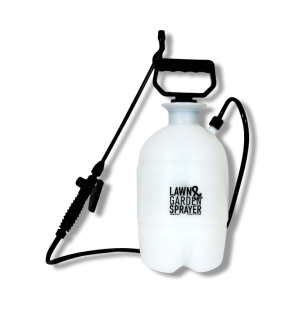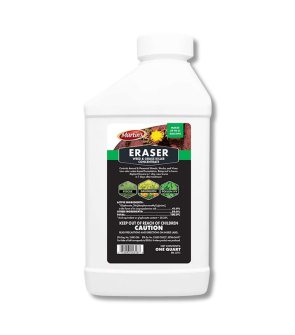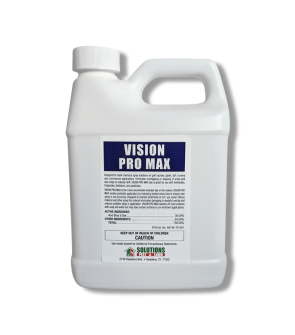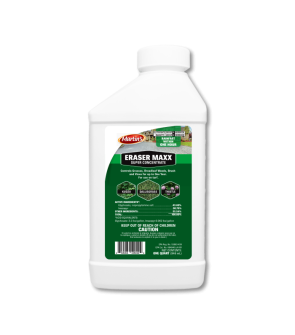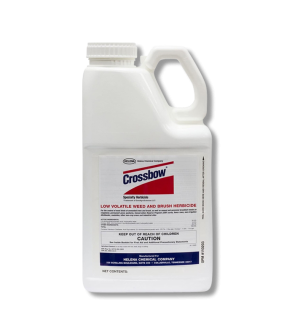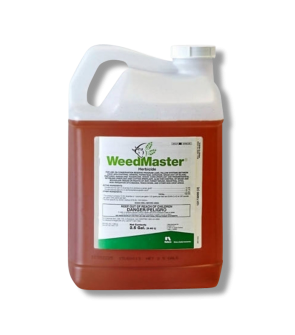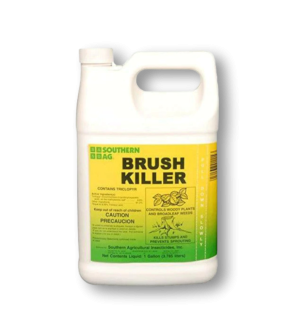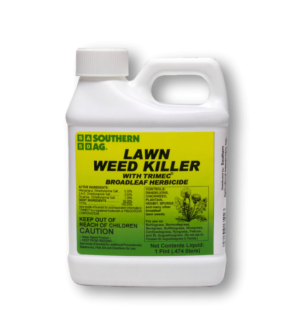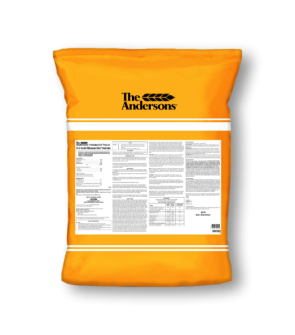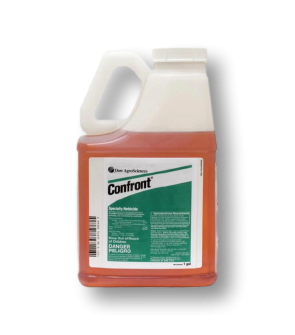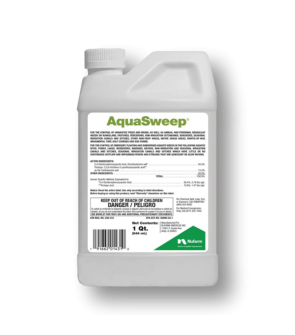Gain access to personalized product screening, the best pricing, rewards, and more!
Most Effective Products
Poison Ivy Control: How To Get Rid of Poison Ivy
This page is a general DIY guide for controlling poison ivy. Using the suggested products and methods, you can control poison ivy. Follow this DIY article and use the recommended products, and we guarantee 100% control of poison ivy.
Poison ivy is a popularly known plant, but mostly for negative reasons. Scientifically known as Toxicodendron radicans, it is a vine or shrub plant that likes to grow low to the ground or can spread up on trees and take over a landscape.
Poison ivy is notorious for its reputation for causing allergic reactions like skin irritation, blistering, and burning sensations on any part of the body that comes in contact with it. Depending on how sensitive your skin is and how it reacts to poison ivy, an encounter with this plant may result in a trip to the doctor's office to treat your rashes.
Poison ivy can grow just about everywhere. Usually, it is seen along fencerows, roadside areas, and in woody landscapes. Poison ivy is also found around residential areas, in shrubbery, in flower beds, and along the perimeter of lots. Poison ivy tends to sneak up on people because it may fly under the radar in early growth. Once it has fully grown, it can come as a surprise for people that poison ivy is growing on the property, and they would have to warn their children not to play outside near it.
If poison ivy is growing on your property or garden, we can help. Our lawn care experts have put together a DIY poison ivy treatment guide that will show you how to eliminate poison ivy quickly and affordably using our professional-grade herbicides.
Identification
Before proceeding, you must be sure the weed you see is poison ivy. To know what poison ivy looks like, take a look at the following characteristics:

- Identifying poison ivy can be tricky because it resembles harmless backyard plants, including Virginia creeper and the leaves of the boxelder tree. The appearance of poison ivy can vary, with the leaves either looking shiny or dull, and the leaf margins can be toothed, wavy, or have no teeth. Some poison ivy leaves are hairy, while other types are hairless.
- Poison ivy is a versatile plant that can grow tall or low. Young plants start herbaceous but become woody as they mature.
- Woody vines creep up trees or vertical structures; if none are nearby, it grows as a shrub. When growing vertically, poison ivy can reach heights of over 75 feet. As a shrub, poison ivy grows up to 4 feet tall, or it can creep lower into the soil. This plant’s leaves can vary. Even different leaves on the same plant can appear different from one another. The leaves can be shiny or dull, the leaf edges can be toothed or not, and some plants can be hairy while others are not.
- The most common trait all poison ivy plants possess is their compound leaves. Each leaf is composed of 3 leaflets. Remember, “leaves of three, let it be.” The leaflets can be between 2 and 5 inches in length. New leaves start forming in spring and start red, then turn green as they mature. As fall comes around, the leaves turn an even brighter red or yellow before falling off the vine.
Use our description and image above to help you to identify poison ivy. If you are having trouble identifying poison ivy, contact us, and we will help you correctly identify the weed and offer herbicide recommendations for control.
Inspection
Once you confirm that you are dealing with poison ivy, you can proceed to inspection. During this phase, you will locate areas where poison ivy thrives and observe the conditions that allow it to thrive. This information will help you know where to focus your herbicide application.

Where to Inspect
Poison ivy can grow in many places: up trees, along the ground, or up the sides of buildings. It can grow in a wide variety of soil moisture conditions, but it needs full or partial sunlight.
What To Look For
Poison ivy is fairly easy to identify via its three leaflets that can be either smooth, scalloped, or irregularly toothed regarding its margins. Poison ivy produces white, smooth berries that grow in clusters that birds enjoy eating without feeling any effects of its poison. The entire plant is poisonous due to the oil resin it emits, called urushiol. This oil can be easily picked up on tools, clothes, and pet fur.
Treatment
When treating poison ivy, ensure you are adequately ready for the occasion. Wear long pants, long sleeves, gloves, and boots, covering as much skin as possible because you not only do not want poison ivy on your skin, you don't want to get chemicals on you accidentally.
Poison ivy that’s grown tall can be clipped near ground level and pulled down from its structure. However, this comes with the risk of contact with the plant, so complete coverage should always be worn. Be aware that the plant must be clipped for several growing seasons before it is fully controlled.
To avoid contact with the plant, we recommend you use an herbicide like Eraser 41% Glyphosate. Keep in mind that Eraser is a non-selective herbicide that will treat any plant it is applied to or may drift to. Mix 2.5 fluid ounces of product into 1 gallon of water to treat every 300 square feet.
Step 1: Measure and Mix Eraser

Eraser 41% Glyphosate is a non-selective herbicide that will kill all sorts of invasive weeds, including poison ivy.
Determine how much Eraser 41% Glyphosate to use by measuring the square footage of the treatment area. To find the square footage, measure the treatment areas' length and width in feet, then multiply them together (length X width = square footage).
To spot treat with Eraser 41% Glyphosate, mix 2.5 fluid ounces of product into 1 gallon of water to treat every 300 square feet.
Fill a pump sprayer or backpack sprayer halfway with the required amount of water, and then add the appropriate measured amount of Eraser based on your calculations. Fill with the remaining half of the water and agitate well to ensure the product is well mixed.
Add a marking dye like Vision Pro Max to your solution to keep track of where you've sprayed. Vision Pro Max is a non-herbicide additive that dyes your solution.
When you apply with Vision Pro Max, any foliage you spray will temporarily be dyed blue so you know exactly where you’ve treated. Vision Pro Max is highly concentrated, so you only need to add 1/10 of a fluid ounce of dye for every 1 gallon of solution.
Step 2: Spray the Poison Ivy
When your solution is ready, spot-treat targeted weeds with a fan or cone spray pattern to ensure the leaves are fully coated. Spray the weed to the point of wet but not runoff. Be sure to spray on calm days when temperatures are not too hot, and wind speeds are low to minimize drift.
This is simpler when the plant has grown short, but if you want to treat poison ivy that’s grown tall with Eraser, trim the vine at 2 or 3 feet above the surface and manually remove the higher portion. You can then spray the remaining foliage.
Eraser 41% Glyphosate must be absorbed through a plant’s leaves to take effect. This product has no soil activity and will not be taken up through the roots.
When appropriately applied, affected weeds will turn yellow and begin to die. Conduct follow-up applications as necessary. You should see results within 2 to 4 days, but a second application may be made after 4 weeks.
Applications are most effective when the plant is young and growing before flower or seed production.
Prevention
If you successfully kill poison ivy, you don't want it to return. Use the following preventative measures to ensure poison ivy does not return:
- Once you’ve controlled poison ivy on your property, look for further growth, especially in the spring and summer. To minimize contact with the plant, we recommend you spray new foliage with Eraser.
- Newly sprouted plants can be pulled from beds but wear full coverage to avoid direct contact with the plant.
- If poison ivy plants sprout from turf grass, regular mowing will control them. A lawn dense with taller, trimmed grass can better choke out weeds and prevent them from establishing.
Key Takeaways
What is Poison Ivy?
- Poison ivy is an invasive leafy shrub that can grow in various conditions. It is a health hazard because its leaves contain an oil that irritates the skin that comes in contact with it.
How to Get Rid of Poison Ivy
- Our top recommendation for removing poison ivy is a post-emergent treatment of Eraser 41% Glyphosate. Be sure to use Vision Pro Max to track where you are spraying.
Prevent Poison Ivy Reinfestation
- Prevent a poison ivy return by monitoring your yard periodically and pulling out any young poison ivy plants that may emerge.






